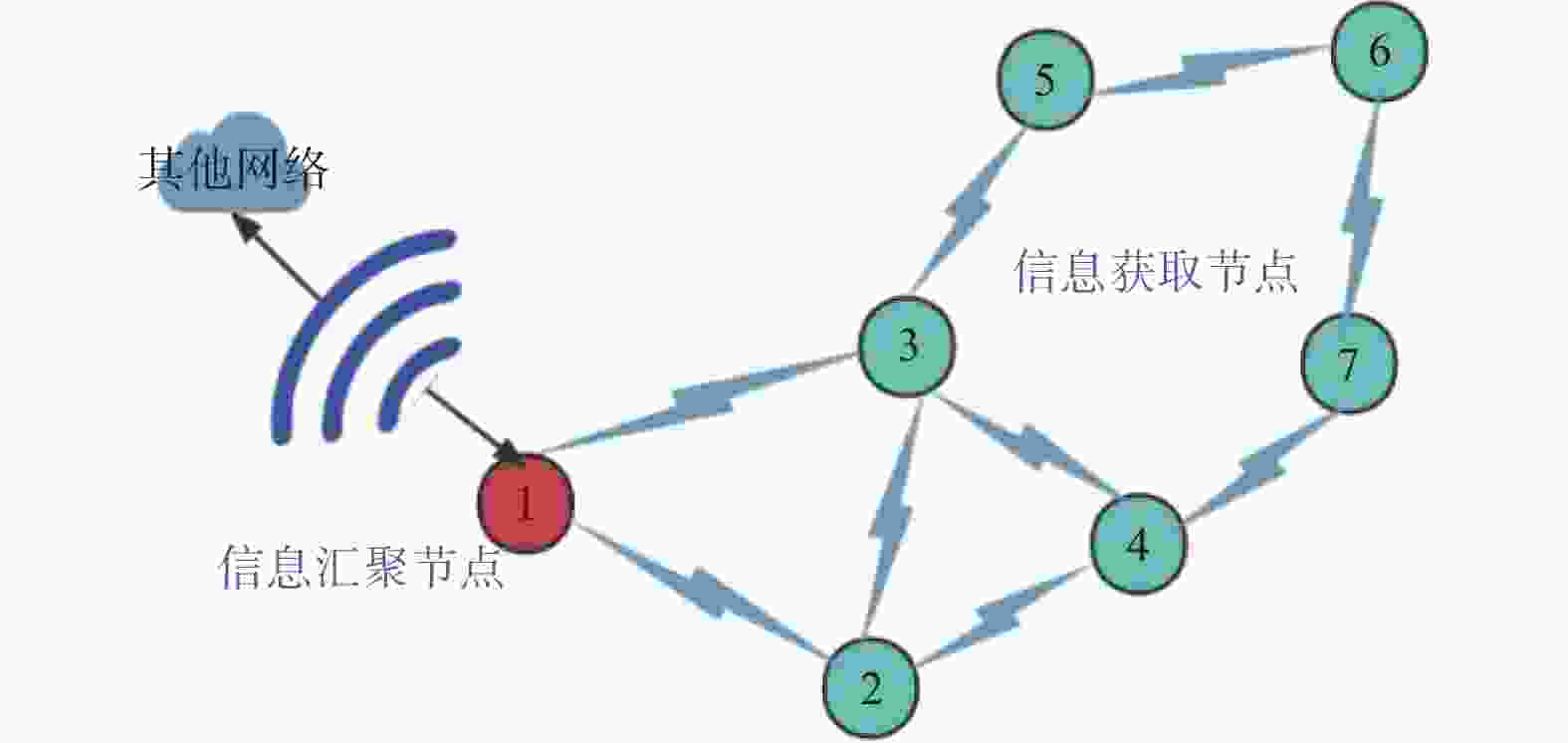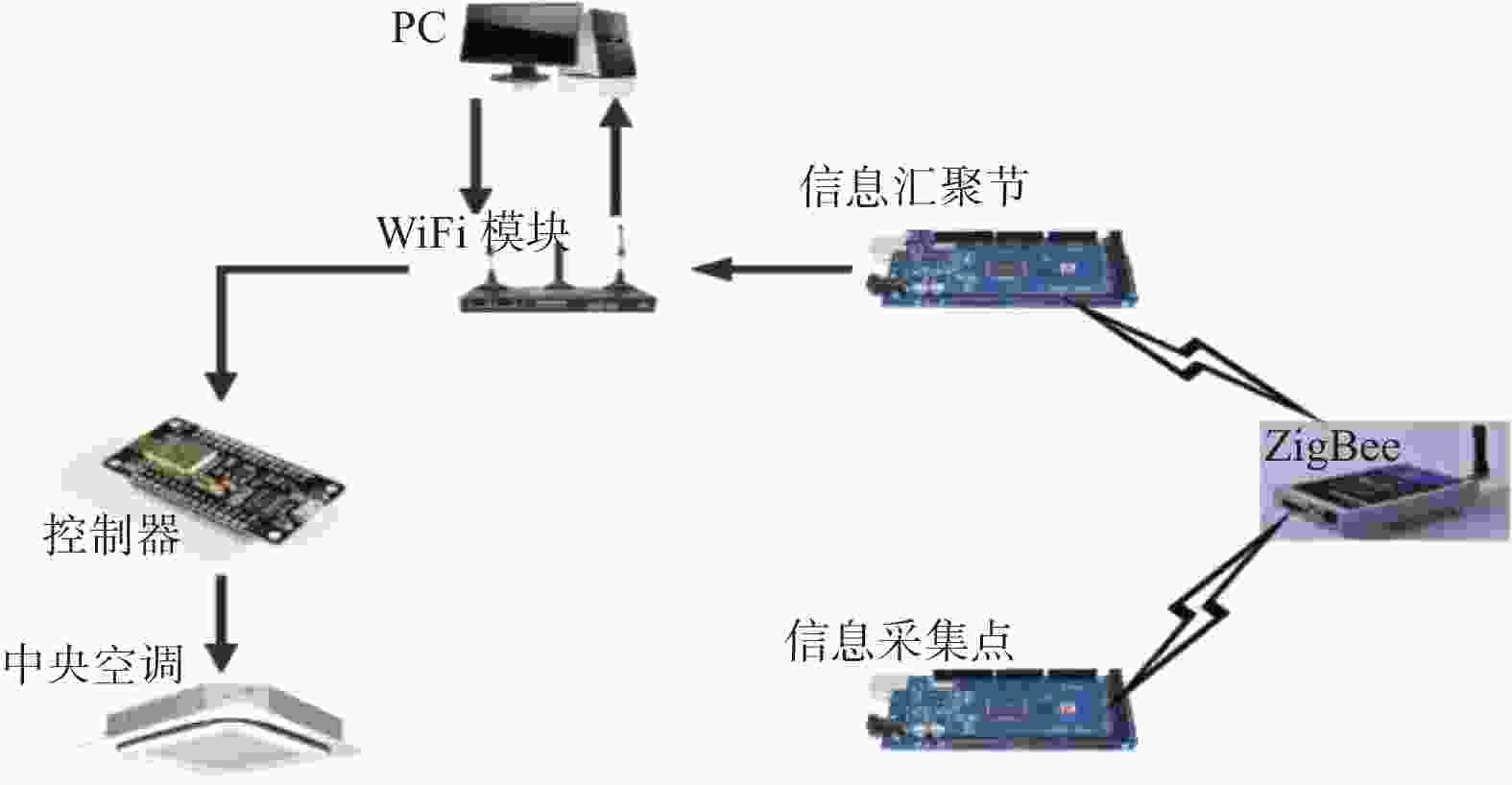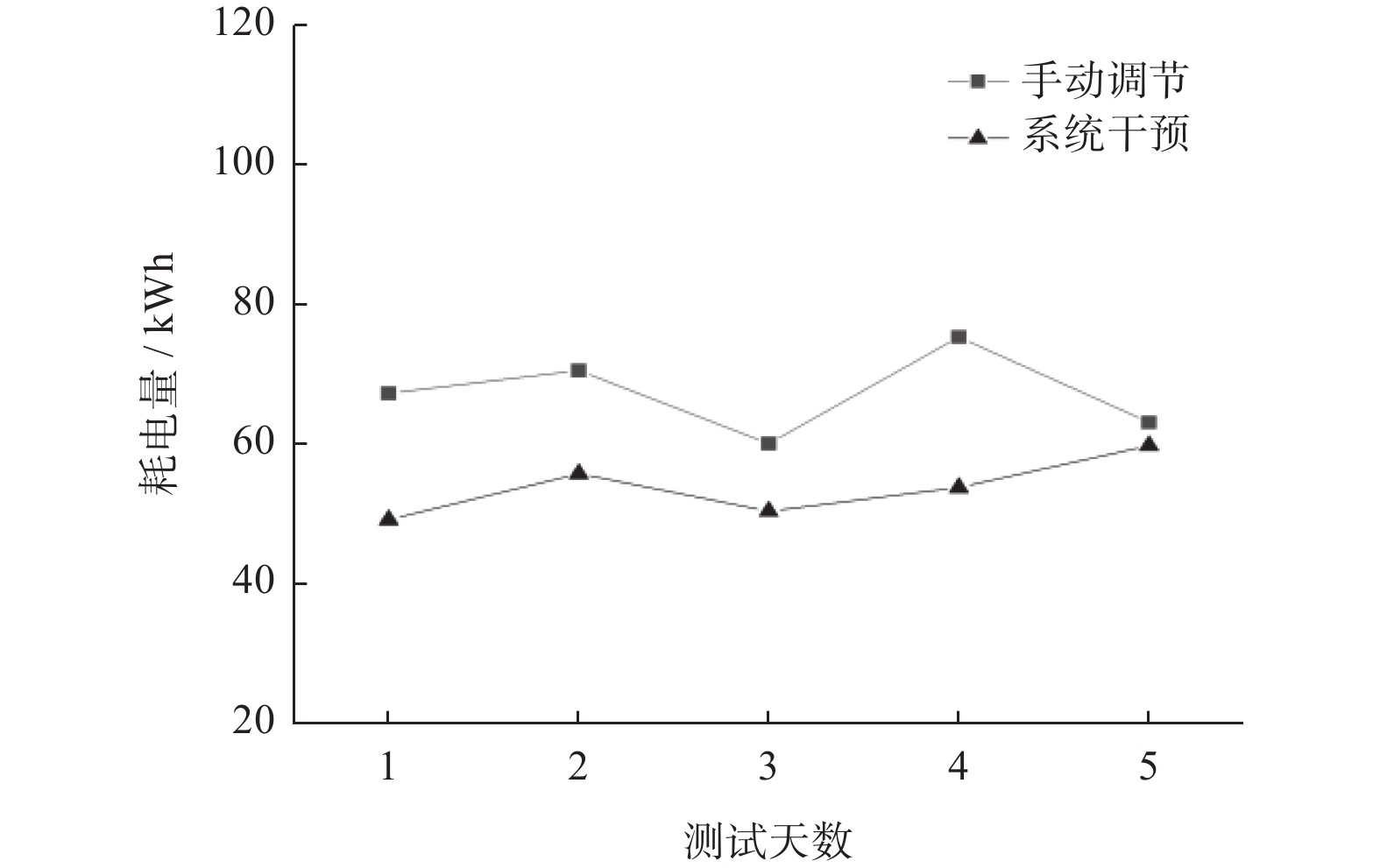Design of indoor thermal comfort system based on wireless sensor network
-
摘要: 为实现室内环境在保持热舒适状态的同时最大限度地减少能源消耗,设计一款基于无线传感器网络和简化预测平均热感觉(PMV)指数的室内热舒适系统。该系统采用散点布置法确定室内各传感器的最佳测量节点,采集的数据通过ZigBee通信传输到系统中,在系统中通过简化PMV指数评估室内环境的热舒适感知。最后,采用具有模糊性和非线性的模糊控制调控空调的运行。结果表明,散点布置的传感器收集的数据更加稳定准确,简化PMV指数可以有效替代PMV指数评估人体热舒适感知。热舒适系统不仅可以控制室内环境处于热舒适范围,同时也起到很好的节能效果。
-
关键词:
- 无线传感器网络 /
- 散点布置法 /
- 简化预测平均热感觉指数 /
- 模糊控制 /
- 管理系统
Abstract: In order to minimize energy consumption while maintaining thermal comfort, an indoor thermal comfort system based on wireless sensor network and simplified predicted mean vote (PMV) index was designed. The scatter layout method was used to determine the best measurement nodes of indoor sensors, and the collected data was transmitted to the system through ZigBee communication. In the system, the thermal comfort perception of indoor environment was evaluated by simplified PMV index. Finally, fuzzy control with fuzziness and non-linearity was used to regulate the operation of the air conditioner. The results show that the data collected by the scatter sensor is more stable and accurate. Simplified PMV index can effectively replace the PMV index in evaluating human thermal comfort perception. The thermal comfort system can not only control the indoor environment within the thermal comfort range, but also play a good energy-saving effect. -
表 1 标准PMV和简化PMVs值比较
Table 1. Comparison of standard and simplified PMVs values
采集时刻 计算结果 PMV PMVs 9:00 −0.18 −0.22 10:00 −0.09 0.02 11:00 0.15 0.09 12:00 0.19 0.15 13:00 0.37 0.36 14:00 0.47 0.44 15:00 0.45 0.41 16:00 0.32 0.29 17:00 0.21 0.20 平均值 0.21 0.19 标准方差 0.22 0.24 -
[1] 许立. 公共建筑以能耗数据为导向的节能管理方法探究: 评《图说公共建筑能耗的数据挖掘与模型方法》[J] . 人民长江,2022,53(6):242. [2] 褚俊杰, 徐伟, 霍慧敏. 间接蒸发冷却空调在近零能耗公共建筑中的应用与实测[J] . 建筑科学,2021,37(10):9 − 15, 41. [3] FRANCO S S, HENRIQUEZ J, OCHOA A, et al. Thermal analysis and development of PID control for electronic expansion device of vapor compression refrigeration systems[J] . Applied Thermal Engineering,2022,206:118130. [4] LIANG Y C, MCKEOWN A, YU Z B, et al. Experimental study on a heat driven refrigeration system based on combined organic rankine and vapour compression cycles[J] . Energy Conversion and Management,2021,234(1):113953. doi: 10.1016/j.enconman.2021.113953 [5] 庄露萍, 陈曦, 管晓宏. 采暖通风与空调系统中冷却塔传热效率的回归模型[J] . 控制与决策,2018,33(10):1801 − 1806. doi: 10.13195/j.kzyjc.2017.0643 [6] YANG B , WU M C, LI Z , et al. Thermal comfort and energy savings of personal comfort systems in low temperature office: A field study[J] . Energy and Buildings,2022,270:1 − 15. doi: 10.1016/j.enbuild.2022.112276 [7] GUPTA S K, KUMAR S, TYAGI S. Energy efficient and effective node deployment for wireless sensor network[J] . International Journal of Communication Systems,2022,35(1):1 − 17. doi: 10.1002/dac.5139 [8] LUOMALA J, HAKALA I. Adaptive range-based localization algorithm based on trilateration and reference node selection for outdoor wireless sensor networks[J] . Computer Networks,2022,210(8):108865. doi: 10.1016/j.comnet.2022.108865 [9] ZHOU Y D, SU Y, XU Z B, et al. A hybrid physics-based/data-driven model for personalized dynamic thermal comfort in ordinary office environment[J] . Energy and Buildings,2021,238:110790. doi: 10.1016/j.enbuild.2021.110790 [10] CHAI J L, FAN J T. Advanced thermal regulating materials and systems for energy saving and thermal comfort in buildings[J] . Materials Today Energy,2022,24:100925. [11] PISELLO A L, PIGLIAUTILE I, ANDARGIE M, et al. Test rooms to study human comfort in buildings: A review of controlled experiments and facilities[J] . Renewable and Sustainable Energy Reviews,2021,149:111359. doi: 10.1016/j.rser.2021.111359 [12] RUIVO C R, Da SILVA M G, BRODAY E E. Study on thermal comfort by using an atmospheric pressure dependent predicted mean vote index[J] . Building and Environment,2021,206:108370. doi: 10.1016/j.buildenv.2021.108370 [13] KHATOON S, KIM M H. Thermal comfort in the passenger compartment using a 3-D numerical analysis and comparison with fanger's comfort models[J] . Energies,2020,13(3):1 − 15. doi: 10.3390/en13030690 [14] MALIK A, BONGERS C, MCBAIN B, et al. The potential for indoor fans to change air conditioning use while maintaining human thermal comfort during hot weather: an analysis of energy demand and associated greenhouse gas emissions[J] . Lancet Planet Health,2022,6(4):E301 − E309. doi: 10.1016/S2542-5196(22)00042-0 [15] HAN H, LEE J, KIM J, et al. Thermal comfort control based on a simplified predicted mean vote index[J] . Energy Procedia,2014,61:970 − 974. doi: 10.1016/j.egypro.2014.11.1006 [16] FAGUNDES M A R, MENDONA-TINTI I, IESCHECK A L, et al. An open-source low-cost sensor for SNR-based GNSS reflectometry: Design and long-term validation towards sea-level altimetry[J] . GPS Solutions,2021,25(73). doi: 10.1007/s10291-021-01087-1 [17] CHANG F, LI C D. An extended looped functional approach for stability analysis of T-S fuzzy impulsive control systems[J] . International Journal of Control, Automation and Systems,2023,21(7):2409 − 2421. doi: 10.1007/s12555-022-0317-z [18] LANKESHWARA G, SHARMA R, YAN R F, et al. A hierarchical control scheme for residential air-conditioning loads to provide real-time market services under uncertainties[J] . Energy,2022,250(C):123796. doi: 10.1016/j.energy.2022.123796 -






 下载:
下载:









